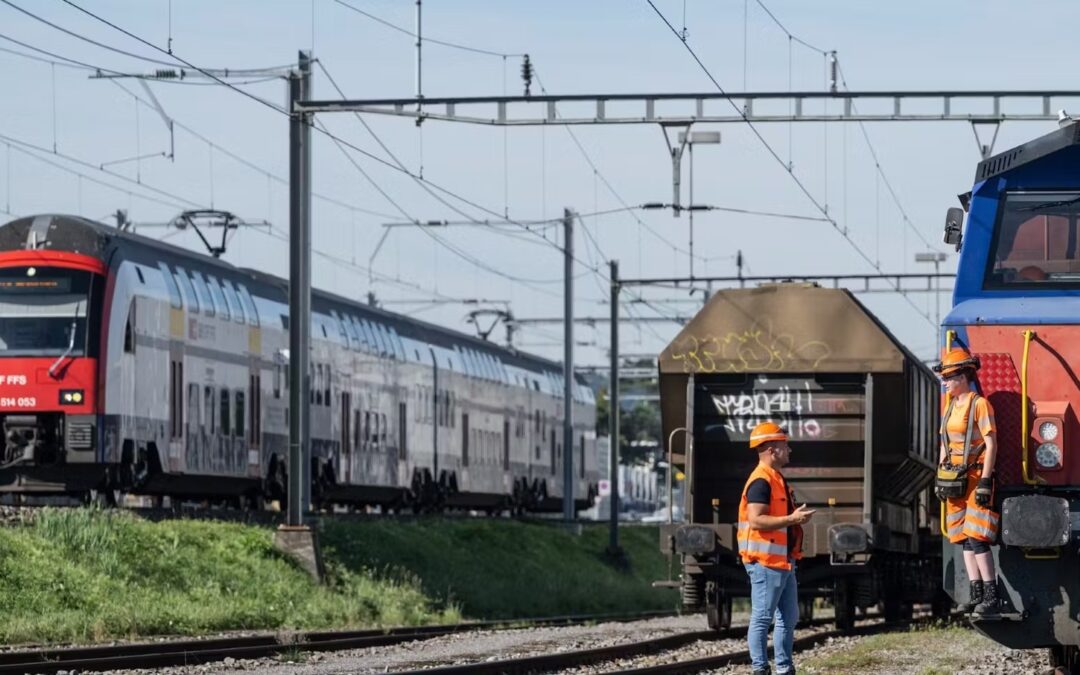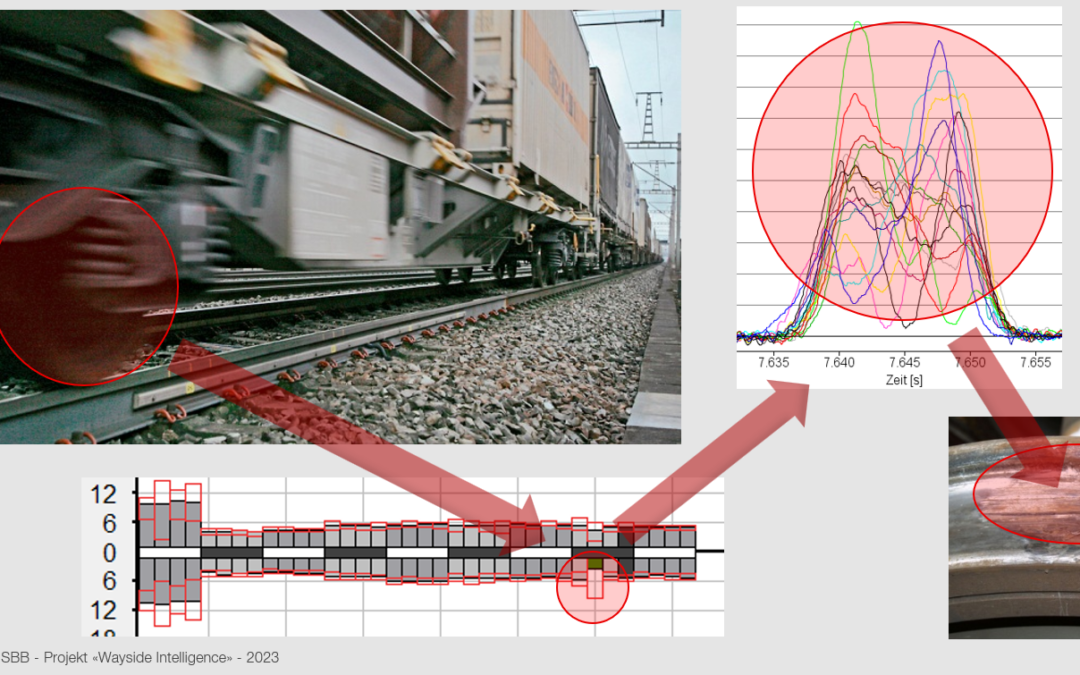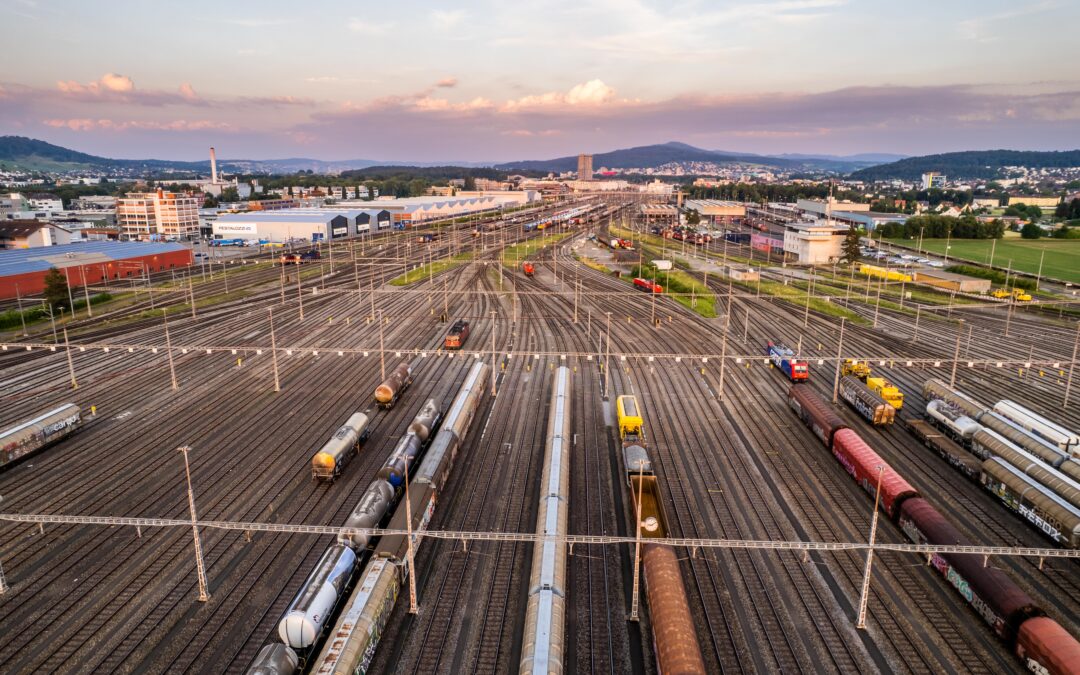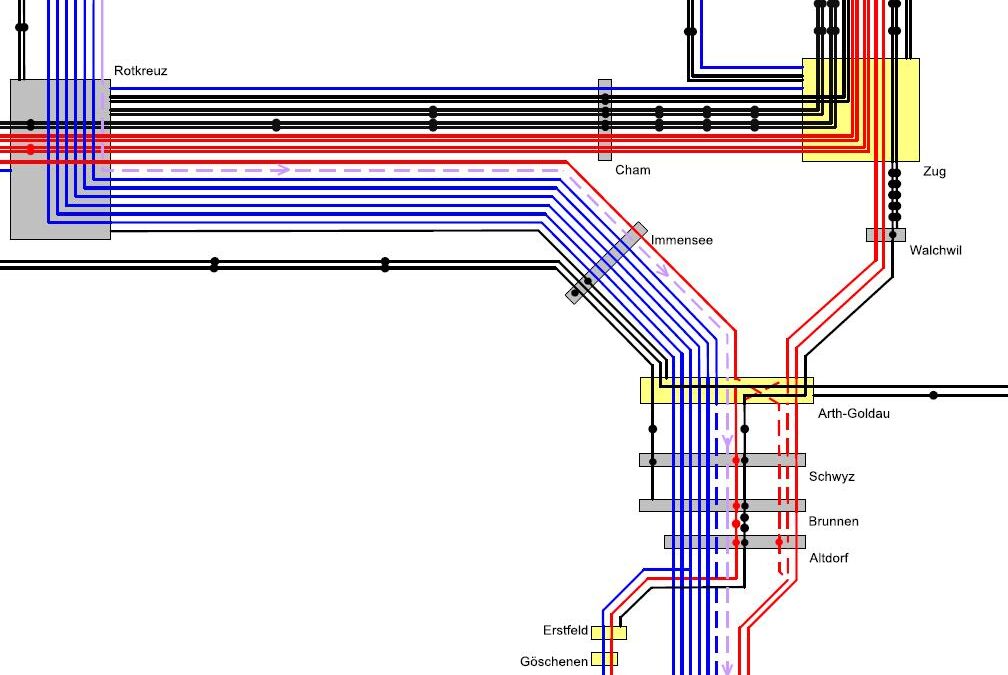[et_pb_section fb_built="1" _builder_version="4.16" global_colors_info="{}"][et_pb_row _builder_version="4.16" background_size="initial" background_position="top_left" background_repeat="repeat" global_colors_info="{}"][et_pb_column type="4_4" _builder_version="4.16" custom_padding="|||" global_colors_info="{}" custom_padding__hover="|||"][et_pb_text _builder_version="4.24.2" background_size="initial" background_position="top_left" background_repeat="repeat" global_colors_info="{}"]
What future do freight railways have in Switzerland? The VAP discusses these and other questions in a double interview with Peter Knaus, Head of Graubünden Freight Railway at the Rhaetian Railway (RhB), and Peter Luginbühl, Head of Operations at the Matterhorn-Gotthard Railway (MGBahn). In the debate, the experts talk about in-house operation and outsourcing, economic viability, innovation, competition and making rail freight transport more flexible.
Mr Luginbühl, rail freight logistics is outsourced on the Matterhorn-Gotthard Railway. Why is that?
Peter Luginbühl: As a company that operates primarily in the tourism sector, our main focus is on passenger mobility. Freight transport accounts for around 2% of the overall result in the public service sector. In 2011, the decision was made to concentrate on rail transport for freight transport. We have placed the upstream and downstream interfaces with the customer under the responsibility of Alpin Cargo AG as the overall logistics service provider. This allows us both to concentrate on our core competences: We are responsible for transport by rail, Alpin Cargo for the interface to the customer, i.e. also for the last mile. In Zermatt, for example, fine distribution is carried out using electric vehicles and horse-drawn carriages.
[caption id="attachment_17210" align="alignright" width="300"]

Peter Luginbühl, Head of Operations Matterhorn-Gotthard Railway[/caption]
To what extent is this outsourcing an advantage?
Peter Luginbühl: This operator model has proved its worth for our starting position with a limited size and a fairly manageable contribution of freight transport to the overall result. It is also ideal from the freight customers' point of view.
Would you outsource again?
Peter Luginbühl: Yes. Our operator model works very well. Nevertheless, we question it every five years and carry out a site assessment. We are only about a quarter of the size of the RhB's Graubünden freight railway. So it doesn't make sense to run it ourselves.
Mr Knaus, you operate rail freight transport yourself. What does this in-house operation look like?
Peter Knaus: We have orders from the canton of Graubünden to provide the public service, among other things. In the past, transport companies were literally forced onto the railway. Things are different today. We use the railway for what makes economic sense. This creates a win-win situation for us and our customers. For short distances or the last mile, we work together with road haulage companies. We regularly exchange information with these business partners at our annual transport platform and through personal contact.
What disadvantages do you see with your model?
Peter Knaus: An enormous amount of effort for our own rolling stock. Here's an example: our entire fleet of around 320 carriages is equipped with vacuum brakes. Now, for strategic reasons, RhB has decided to switch all carriages to air brakes by 2040. According to our 2023-2030 strategy, we will modernise half of the fleet and renew the other half, as this is the more economical option.
What key criteria do you use to select the mode of transport?
Peter Luginbühl: We are convinced that although rail is ideal for all goods, it is not equally suitable for all of them. We currently transport around 40 to 50% of goods between Visp and Zermatt by rail. Rail's strengths over road lie in its large capacities, high availability and reliability. We can guarantee the exact arrival time in Zermatt 99% of the time. With every mode of transport, you have to weigh up which is the best economic and ecological modal split.
Peter Knaus: Lorries are also becoming increasingly ecological. This in turn means that the roads will continue to be well frequented. The canton is happy for every lorry that gets off the road so that there is less congestion in private transport.
[caption id="attachment_17213" align="alignright" width="300"]
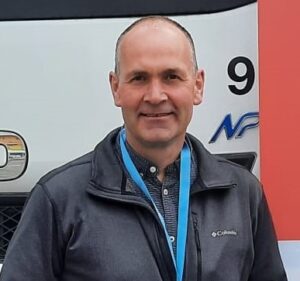
Peter Knaus, Head of Freight Transport at Bündner Güterbahn[/caption]
Which products are more suitable for rail transport, and which still have potential?
Peter Knaus: Long-distance goods that depend on punctuality and reliability, such as foodstuffs. Likewise letter and parcel post and general cargo that needs to be delivered on time. Scheduled freight, which we transport from 4.00 am. Rubbish and recycling material must be transported within 24 hours. Building materials such as cement or salt are also very suitable for rail freight transport. We also transport an extremely large amount of round timber, around 95%, to Tirano. We are predestined for this, as customs clearance is also more economical than with a lorry. We transport most goods in combined transport, except for logs and general cargo. Combined transport has great potential for the future. I see potential for pellet transport in our area.
Peter Luginbühl: We have a very similar product focus to RhB. But we don't transport wood. We also transport large quantities of heating oil. We also transport a lot of luggage for the tourist destination of Zermatt. Over the last few decades, consignments have become smaller, not least due to the mail order business.
Reliability and punctuality: what do you think?
Peter Luginbühl: As a small railway, we can guarantee stability and punctuality extremely well. 95% or more of our customers are extremely satisfied with our reliability. The situation is very different in the European or Swiss-wide freight railway system. Punctuality is a huge problem here. The industry still needs to improve a lot and become a more reliable partner.
Peter Knaus: I agree with that. We are extremely punctual, especially when it comes to food transport or scheduled freight. When we work with the big players, it becomes more challenging to meet the desired deadlines. For the WEF transport project, for example, we were reliant on suppliers from the standard gauge. If they don't arrive on time in Landquart, we can't deliver the containers to Davos on time either. This poses a major problem for our customers, as time slots allocated at the WEF have to be adhered to.
What developments do you recognise in production?
Peter Luginbühl: At the moment we still have mixed production, whereby we mainly work with block trains. We are increasingly moving away from attaching freight wagons to passenger trains. For one thing, the new multiple-unit trains and the capacities of our track systems no longer meet these requirements. We are also losing the logistics space for transhipment. We will increasingly concentrate on block goods trains.
Peter Knaus: We run 52 freight-only trains a day on the main network. The new trains with automatic coupling are only designed to move themselves. The sheer number of goods trains means that we retain a certain degree of flexibility. We have fixed annual timetables for scheduled freight, everything is planned through. We only run mixed services towards Arosa and Bernina, as there are not enough train paths for pure goods trains.
Speaking of train paths: What challenges do you face here?
Peter Knaus: During the day, regional passenger transport sets the pace for us. We have to adapt to this. We also have to adapt to prestige trains such as the Glacier and Bernina Express. Our most flexible time slots are from 4.00 am to 6.30 am. From 9.00 p.m. there is mainly construction work going on, so we can only operate to a very limited extent. The RhB and the canton support us well in the track issue and involve the various interest groups.
Peter Luginbühl: I see four challenges with the railway lines. Firstly, economic efficiency. Our desired train paths are often occupied by tourist trains, which are more economical. Secondly, economic viability. We have enormous investments and major financing issues. We make an important contribution to the security of supply in our region. Thirdly, flexibility through speed. We cannot react as quickly to changes in supply as a transport company can. Fourthly, innovative strength. We still produce in the same way as we did 30 years ago. I am curious to see whether we will actually be able to transform through digitalisation.
What best practice cases are there that you and others can learn from?
Peter Luginbühl: I see fine distribution over the last mile as a successful model. Our partner does it in such a way that more and more customers come, precisely because he is so flexible. And finally, I consider the disposal of rubbish to be an exciting business model from an ecological and economic point of view.
Peter Knaus: In my opinion, a good example is the conversion of beverage transport. The Valser company has been transporting its beverages from Vals via Ilanz to Untervaz for over 40 years. The early morning transhipment at the ramp in Ilanz caused a lot of noise emissions. This gave rise to the idea of using swap bodies for transshipment. Together with the parent company Coca-Cola and the canton, we procured suitable swap bodies. These have proved very successful. In the foreseeable future, we will even be transporting them using electric lorries with trailers. In dialogue with the canton and the police, we have obtained a special permit for trailers for the Schnaus-Ilanz route. . The only sticking point at the moment is the HVF reimbursement in combined road-rail transport. This refund is still linked to the LSVA. In future, it must be linked to combined transport. The legal framework still needs to change.
Which innovations will prove their worth in rail freight transport in the coming years?
Peter Knaus: I consider power packs, i.e. batteries that are mounted on the freight wagons, to be a sustainable solution. These can be used as an energy supplier for refrigerated containers, but also for construction work in the tunnels. We have even equipped sliding wall wagons with modern Powerpacks. We have also made great progress in the area of freight wagon tracking. We now know where the freight wagons are, how fast they are travelling, what their battery levels are, what the temperatures are in the refrigerated containers, etc. We can utilise this data in a digital scheduling system. We have also already thought about an Uber system for general cargo. That would be very innovative, but the sticking point here is the production costs and suitable partners.
Peter Luginbühl: Rail freight transport will still be around in 30 to 50 years' time. To achieve this, we need to move away from the current rigid systems. Starting with the wagon superstructures, through rigid logistics processes in freight handling or wagon management, to wagon flexibility. There is potential everywhere to meet future requirements with innovations.
What does it take for such innovations to be realised?
Peter Knaus: I am a member of the FOT expert committee for technical innovations. The federal government is very open here and supports innovations that bring long-term benefits. The canton of Graubünden is also very open to innovations and supports them to the best of its ability if they bring economic and ecological benefits.
Peter Luginbühl: In regional passenger transport, it took pressure from a private economic player like Google to get things moving. That would probably be good for us too. It would be exciting if a market third party were to build up pressure.
What do you think about Europe-wide integrated data platforms?
Peter Knaus: An exciting starting point for the players in freight transport, and not just on the railways. The development of this is challenging, and I'm not sure whether everyone would make their data available. Currently, our customers can use tracking to see where the loading equipment is currently located. This allows a mineral oil transport customer, for example, to organise their and our scheduling more efficiently. I would welcome greater consistency with our customers, especially when it comes to timber loading.
Peter Luginbühl: We would have to equip the wagons with tracking devices. Only then could we take further steps towards data exchange, including across modes of transport. We at MGBahn are less concerned about this because we have a local focus.
Where do you see the greatest levers for advancing rail freight transport?
Peter Luginbühl: In making the rail freight system more flexible. We will never be as flexible as road transport. But we must be able to react more quickly to customer needs and play to the strengths of the railways. The potential for rail transport is huge. The pressure to shift transport to rail will come of its own accord.
Peter Knaus: You certainly have to differentiate between metre gauge and standard gauge. We have a manageable network with metre-gauge tracks. Compared to the SBB, we can react very quickly. A planned changeover of two weeks is quick compared to SBB - and slow compared to a road transport company. The latter switches within days. The more money we have, the faster we can invest in traction units and freight wagons or modernise the fleet and the more flexibly we can react to the wishes of our customers.
To what extent would more competition among the rail freight companies change the dynamics of the rail freight market?
Peter Luginbühl: More competition, more dynamism. However, the entry threshold for new players in our market is very high. If you want to operate a freight railway, you need a compliant traction unit and expensive rolling stock. That's a different matter from buying a lorry for a few hundred thousand francs. Examples such as Railcare or Swiss Post show that competition leads to innovation and price pressure.
Peter Knaus: Competition is good and encourages development. Those responsible at Railcare have a very good transport logistics concept, they combine road and rail with their own fleet. Competitor companies on the railway are also dependent on free train paths. They cannot simply set off when they are fully loaded. In terms of price, small rail freight operators have the advantage that they have to factor in lower overheads.
What do you think of the VAP and what would you recommend to our association?
Peter Knaus: I have always had good contact with Secretary General Frank Furrer. I was in charge of the transport logistics project at the regional parcel centre in Untervaz. I worked very closely with the VAP. He was an independent and very valuable project member. I find the dialogue with Frank Furrer, Jürg Lütscher and other VAP representatives, who bring in a shipper's perspective, constructive and exciting.
Peter Luginbühl: I didn't know that this association existed until recently. My recommendation would be for you to make your association better known among freight transport companies. I think it's great what the VAP is doing.
What hasn't been said yet?
Peter Luginbühl: This discussion has given me valuable ideas, thank you for that.
Peter Knaus: Thank you for inviting us to this interview and giving us the opportunity to present ourselves.
|
About Peter Knaus and the Graubünden freight railway
Peter Knaus is Head of Freight Transport at the Graubünden Freight Railway of the Rhaetian Railway (RhB). He also represents the narrow-gauge railways on the Freight Transport Commission (KGV) of the Swiss Association of Public Transport (VöV) and is a member of the Rail Freight Transport Advisory Group of the Federal Office of Transport (BAV). Under the umbrella of RhB, the Graubünden Freight Railway offers a wide range of transport solutions for companies and private individuals in Graubünden. With its diverse fleet of wagons - including container wagons, sliding wall wagons and tank wagons - it transports goods of all kinds. The service points cover the whole of Graubünden and include important industrial centres, logistics centres and agricultural businesses. As a result, the Graubünden freight railway guarantees a comprehensive supply of goods throughout the region and is an indispensable part of the regional logistics infrastructure.
|
|
About Peter Luginbühl and the Matterhorn-Gotthard Railway
Peter Luginbühl has been Head of Operations at the Matterhorn-Gotthard Railway since 2017. The qualified controller previously worked for several years as Head of Corporate Development HR at SBB. The Matterhorn-Gotthard Railway operates its freight transport with Alpin Cargo AG, a subsidiary of the Planzer Group. It offers a wide range of services for local businesses. These include goods handling, warehouse logistics and transport by both rail and road. The supply of mineral oil is another important service. Alpin Cargo not only serves companies on the last mile, but also private individuals. They can use its services for removals, the storage of household goods and home deliveries with assembly and e-transport.
|
[/et_pb_text][/et_pb_column][/et_pb_row][/et_pb_section][et_pb_section fb_built="1" _builder_version="4.16" _module_preset="default" locked="on" global_colors_info="{}"][et_pb_row _builder_version="4.16" _module_preset="default" global_colors_info="{}"][et_pb_column type="4_4" _builder_version="4.16" _module_preset="default" global_colors_info="{}"][et_pb_post_nav prev_text="Vorheriger Artikel" next_text="Nächster Artikel" _builder_version="4.16" _module_preset="default" global_colors_info="{}"][/et_pb_post_nav][/et_pb_column][/et_pb_row][/et_pb_section]
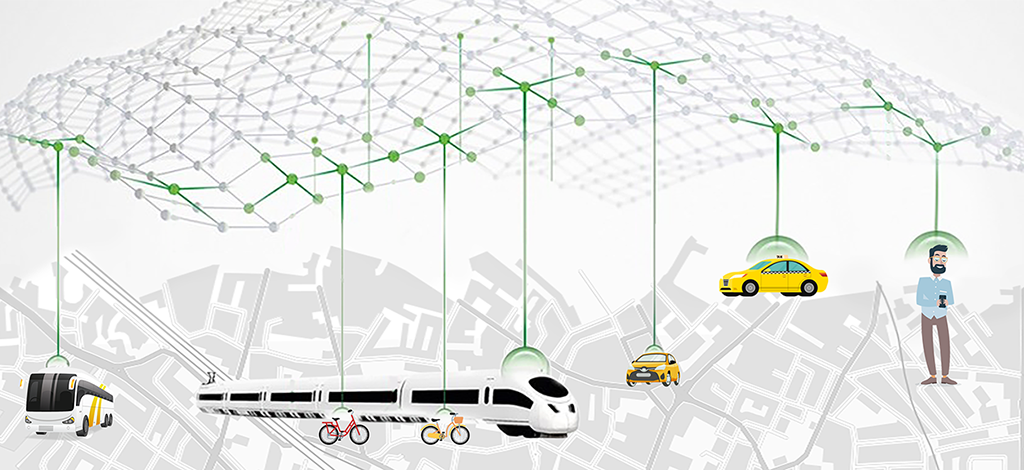
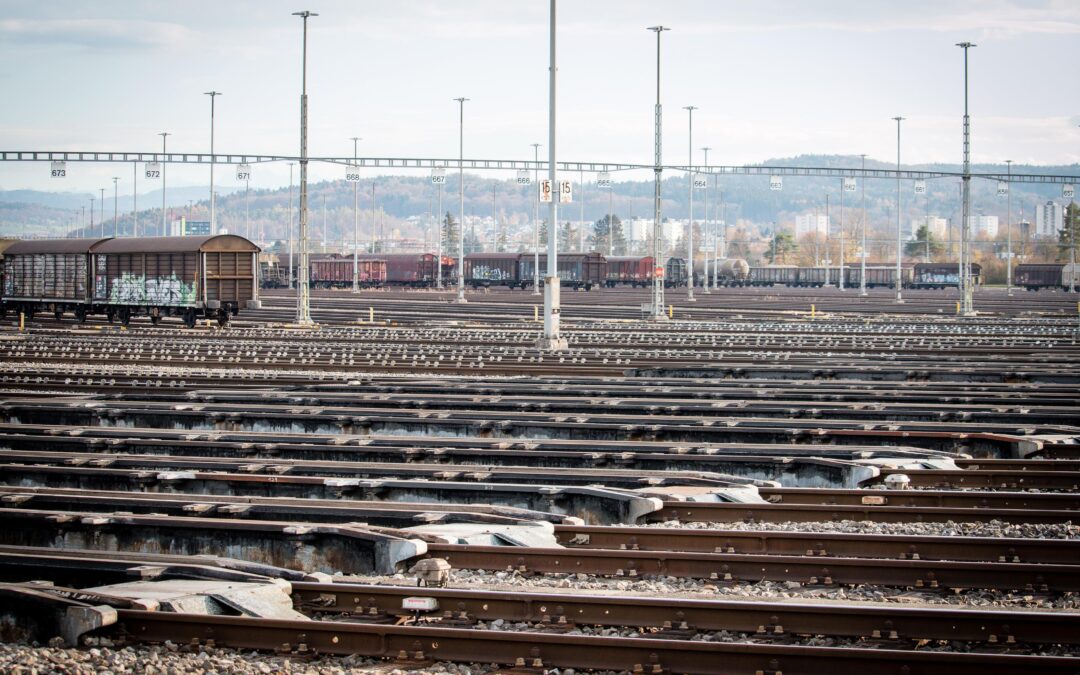

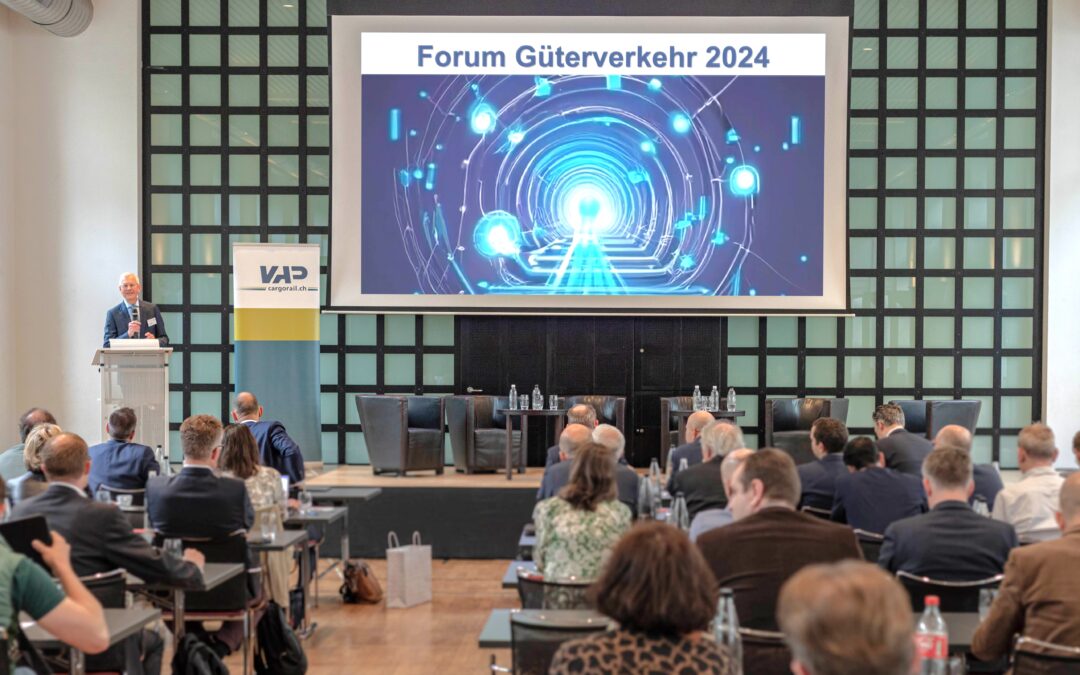
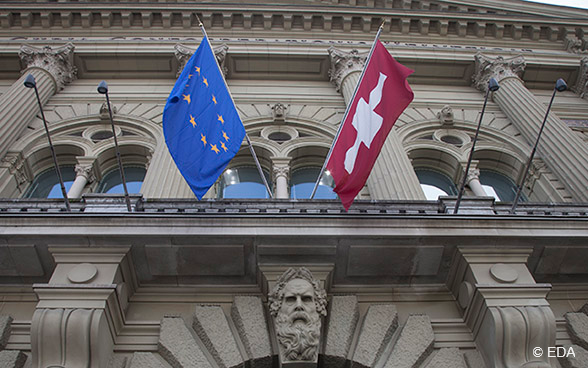
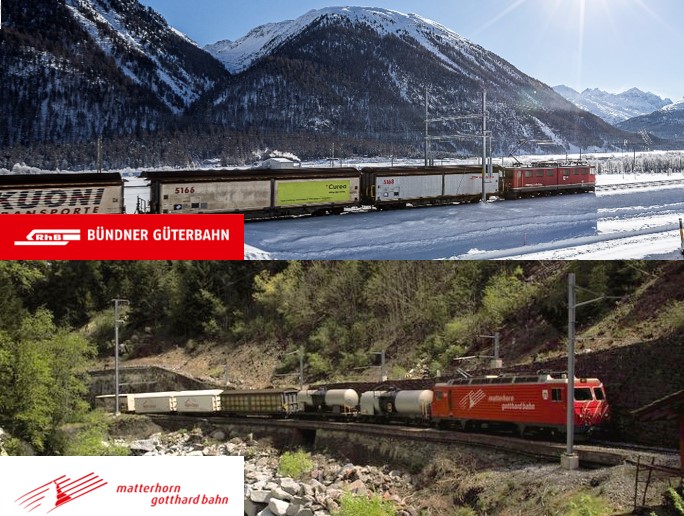
 Peter Luginbühl, Head of Operations Matterhorn-Gotthard Railway[/caption]
Peter Luginbühl, Head of Operations Matterhorn-Gotthard Railway[/caption]
 Peter Knaus, Head of Freight Transport at Bündner Güterbahn[/caption]
Peter Knaus, Head of Freight Transport at Bündner Güterbahn[/caption]
